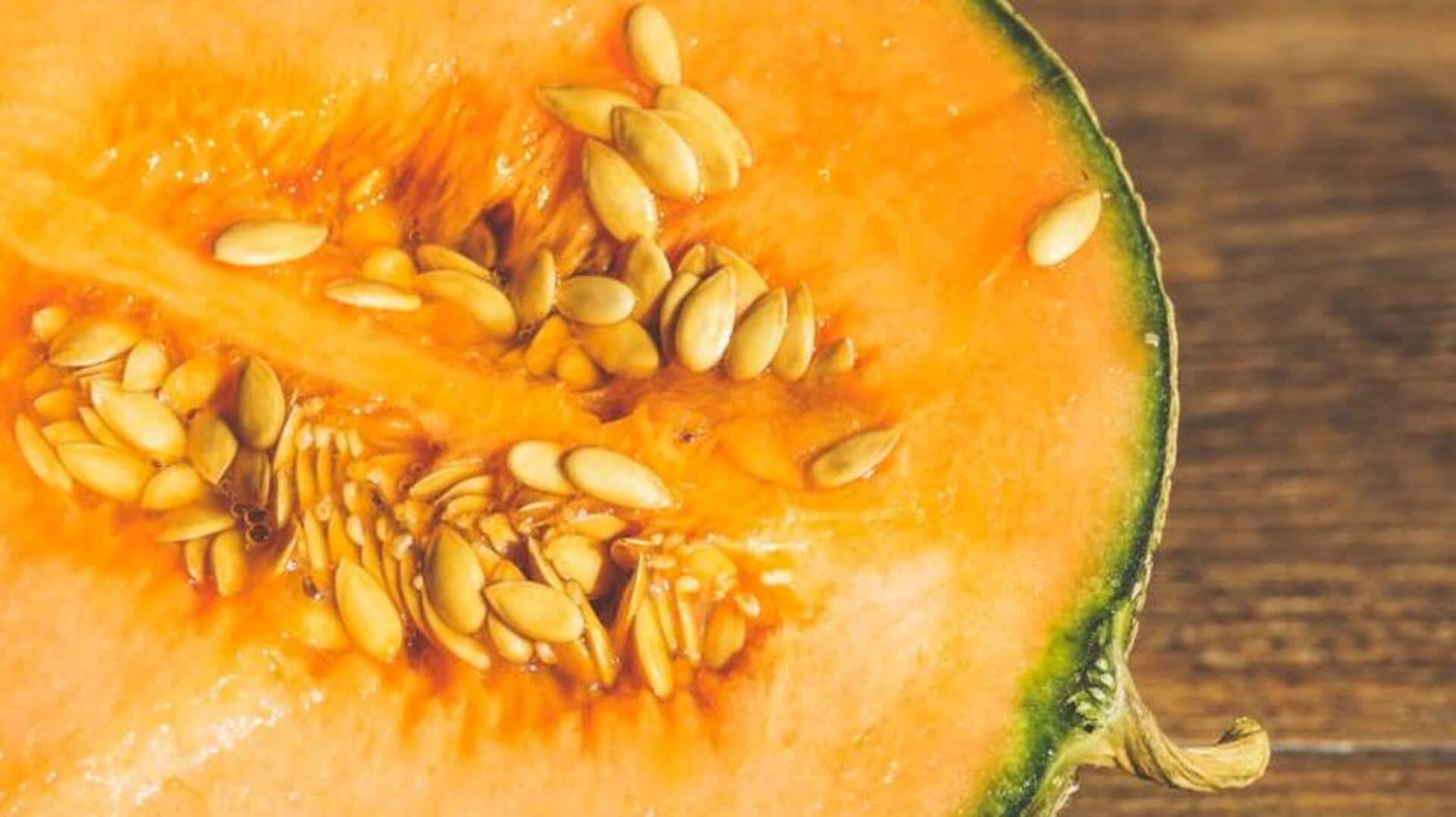
A simple guide to growing cantaloupe at home
What's the story
Growing cantaloupe at home can be extremely rewarding, giving you fresh and juicy fruits plucked straight from your garden.
And, it's not as complicated as it may sound. Given the right conditions and care, you can enjoy a bountiful harvest of this delicious fruit.
Be it a spacious backyard or just a small balcony, cantaloupes can thrive with some basic gardening techniques and attention.
Seed selection
Choosing the right seeds
Selecting high-quality seeds is the key to successful cantaloupe growth.
Choose seeds that are specifically labeled for home gardening; they are usually more resilient to common pests and diseases.
If you want unique flavors or characteristics in your melons, consider heirloom varieties.
The seeds should be fresh, so check the packaging date; they should ideally be less than one year old.
Soil preparation
Preparing the soil
Cantaloupes need well-drained soil that is rich in organic matter.
Before planting, loosen the soil up to 12 inches deep, and mix compost or aged manure to improve the fertility.
The ideal pH level for growing cantaloupes ranges between six and 6.8.
You can test your soil's pH to make necessary adjustments using lime or sulfur.
Planting methods
Planting techniques
Plant cantaloupe seeds directly into the ground after all danger of frost has passed, spacing them two feet apart in rows four feet apart.
If using containers, make sure they are big enough to accommodate mature plants, with good drainage holes at the bottom.
Water immediately after planting, but avoid overwatering, as it may lead to root rot.
Care instructions
Watering and fertilizing tips
Cantaloupes require consistent moisture but not to the point of being waterlogged; shoot for roughly an inch of water weekly via rainfall or irrigation systems, such as drip hoses, that reduce leaf wetness, lowering disease risk.
Fertilize with a balanced fertilizer every two weeks during growth periods, but scale back once fruits start forming to avoid excessive foliage growth over fruit development.
Pest control
Pest management strategies
Common pests include aphids, cucumber beetles, and squash bugs, which can damage leaves, leading to reduced yields if left unchecked.
Use insecticidal soap sprays made from natural ingredients such as neem oil when necessary, following label instructions carefully.
Avoid beneficial insects like bees whenever possible by applying early in the morning before pollinators become active.